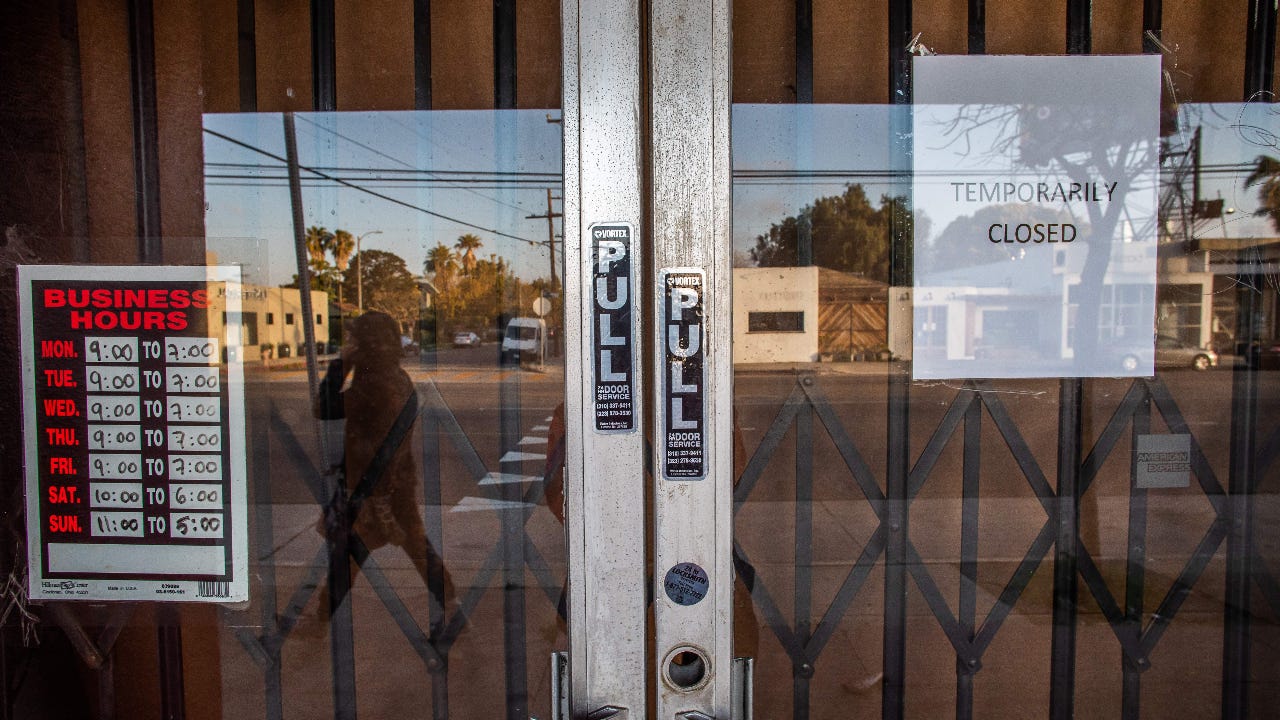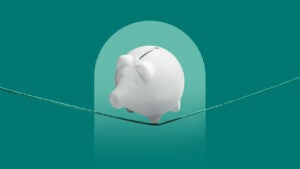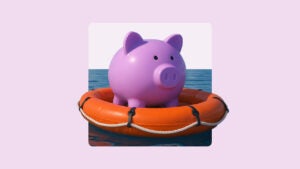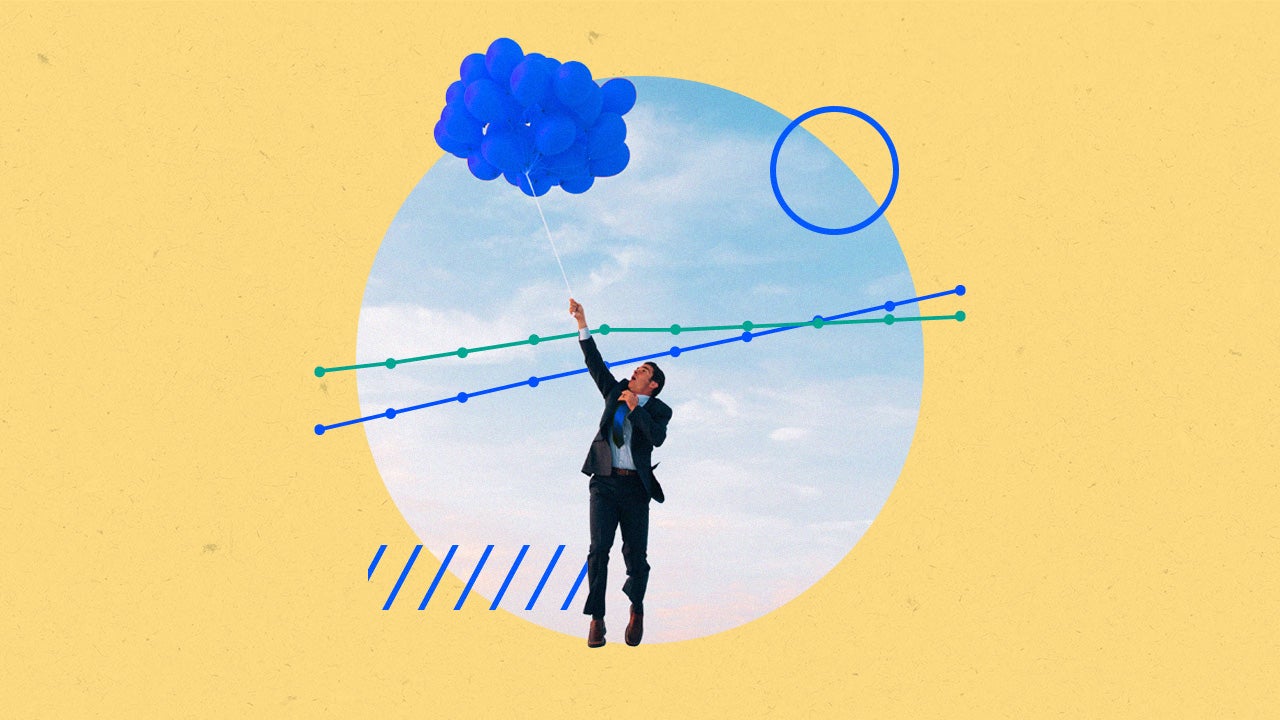When will the U.S. economy get back on track following coronavirus shock? Watch for these 5 signs

Not all recessions are created equally. Neither are the recoveries — and the biggest financial fear is that the current economic slump will persist years after the coronavirus is contained.
Economists often say recessions take on shapes. A “W”-shaped recession is a double-dipping downturn, with the financial system bouncing back but falling again. A “U” form means lower-for-longer, while a “V” means a sharp decline but an equally strong snapback.
That “V” was the ultimate hope when the coronavirus first started spreading in the U.S. Stay-at-home orders were soon issued to keep as many people at home as possible. As retail stores, offices, gyms and bars closed, the economy naturally came to a sudden stop. But there was a silver lining: The economy would surely pick back up where it left off, once those shelters in place were lifted.
Then the data started rolling in. Unemployment surged to its highest levels since the Great Depression, eclipsing that from the Great Recession of 2007-2009. The U.S. economy also contracted by the worst on record in the second three months of 2020, shrinking by 31.7 percent.
Officials at the Federal Reserve see elevated joblessness through 2022, while the Congressional Budget Office also isn’t expecting the economy to get back to where it was until at least two years from now. All of this suggests that the return to normal could happen later — rather than sooner. And amid a resurgence of coronavirus cases, some experts are wondering whether the economy could reverse again.
“What I’m seeing here is a depression-like shock without a depression,” says Joe Brusuelas, chief economist at RSM. “We’re not going to flip a switch and the economy is going to open back up at once. It will take some time to ascertain where the longer-lasting damage is.”
Natural disaster or financial crisis? Current recession has flavors of both
It’s going to be a tricky game of search-and-rescue, simply because the U.S. recession has checked “all of the above” on the list of typical causes.
History suggests that downturns come from different angles. Shocks can be exogenous or endogenous, Brusuelas says — exogenous being an unforeseen external problem and endogenous being economy-restricting policies. But this downturn has flavors of them all.
“It’s hard to even classify what we’re dealing with,” Brusuelas says. “We had supply, demand and financial shocks all at once, cascaded through the real economy. It was like a few years in two weeks.”
Some experts have compared the standstill nature of the current downturn to the Great Depression. But others say it’s more comparable to an “event-driven” recession, or a slowdown that follows some sort of natural disaster or war. Researchers at the New York Fed tracked unemployment claims in Louisiana after Hurricane Katrina, finding that U.S. job losses right now are following a similar pattern, only on a national scale.
“We have no event post-war where the numbers are comparable to this, the only other instance is the Great Depression,” says Samantha Azzarello, global market strategist at J.P. Morgan Asset Management. “But it’s like apples to oranges. It’s much more comparable to a natural disaster.”
Economy getting back on track may depend on vaccine
There’s a caveat: Event-driven recessions seem to be paired with quicker snapbacks. “I wouldn’t say one is any better than the other,” Azzarello says, “but with event-driven, you recover. People know what the deal is.” It’s easy to tell when an event-driven recession is over, she says, because the event is over.
But when the coronavirus restrictions are eventually lifted, the idea that life will quickly return to normal implies that individuals will want to venture back out into the world immediately. Some Americans may still be scared that they could catch the virus. About 2 in 5 Americans in a nationwide Bankrate survey from May, for instance, said they expect to shop less at traditional in-person retailers. All of that can hold back consumer spending, and in consequence, the economic recovery.
Brusuelas himself is one of those individuals. “I’m not going to a movie theater, I’m not getting on a bus, I’m not getting on a subway. I’m going to be very skeptical about who I get in the car with,” he says. “You start thinking through the simple building blocks of the complexity of the economy. Social contracts have been shattered from the inside out. There’s going to be a new relationship between individuals and society.”
Looking back, data suggests that the slowdown in spending began long before consumers were mandated by state governments to stay home in droves. OpenTable data tracking the number of seated diners in the U.S., for instance, shows that dining-in dropped off in March and started plunging in double-digit territory by March 9. The U.S. coronavirus count was just around 700 people infected then, and it was before any state had declared a shelter-in-place, with California becoming the first on March 15.
Economists say developing a vaccine will be the equivalent of tossing the economy a life preserver, and the data seems to agree. A Seton Hall University survey from April found that 72 percent of Americans weren’t planning to attend a sporting event before a vaccine is developed.
But even that will take time. It took 20 months for scientists to develop a vaccine in response to the SARS outbreak of 2003, a pathogen genetically similar to COVID-19, according to a Healthline analysis. There’s also a risk that, once a vaccine is developed, individuals might not take it. CDC data shows that more than half of all Americans didn’t get a flu vaccine during the 2018-2019 season.
“The economy cannot get permanently back on track if there’s the possibility of a person carrying this virus,” says William Poole, former president of the St. Louis Fed. “Going to a movie theater or a restaurant or a sports stadium could spread the disease all over again.”
Beyond vaccine, shutdowns could cause long-term job market harm
All U.S. states have reopened since their March shutdowns, though each phase is different. Economists say it’s led to a faster-than-expected rebound in hiring and consumption, but a resurgence of coronavirus cases has put that in question. Some states have started backpedaling on their reopening plans, restricting spending, and U.S. consumer confidence has taken a direct hit. It could put the U.S. economy in an even worse position, especially if a second wave of infections resurfaces in the fall — something epidemiologists have been warning about all along.
The longer the shutdowns persist, the graver the stakes for everyday Americans. Shortages could take place, leading to higher prices and surging inflation down the road. Temporary layoffs could also become permanent.
“What’s happening now seems to be the only feasible approach to stopping the spread,” Poole says. “But we have to produce goods that are necessary for everyday life, although it’s going to be a massive problem because people can catch the virus having tested clean yesterday.”
Of all the businesses that closed in March, more than half (or 55 percent) have become permanent, according to a July Local Economic Impact Report from Yelp. Researchers at Harvard estimate that nearly 110,000 small businesses have permanently shuttered between early March and early May.
Once unemployment is elevated, history also suggests that it will take a while for it to return to previous levels. Joblessness during the Great Recession peaked at 10 percent and took nearly seven years to return to its pre-recession low. The unemployment rate has during the coronavirus crisis climbed even past that, and at the worst of the crisis, about 1 in 4 U.S. workers had applied for unemployment benefits. Unemployment lags partially due to lingering uncertainty, with employers hesitant to make investment or hiring decisions.
“The idea that we’re just going to see a quick snapback, those kinds of claims ring hollow,” Brusuelas says. “In the near-term, there’s going to be less restaurants, less drinking establishments, and broad consolidation within the airlines and hotel lodging industries. The depth of the downturn will be worse than the duration.”
Watch for these longer-term indicators
1. Watch consumer spending data
If you’re wanting to track how the coronavirus is impacting the economy, it’s important to keep a watchful eye on data. Experts say it’s wise to first watch how much — or how little — consumers are spending, given that it’s the broader engine of economic growth.
Retail sales have rebounded the quickest, though they remain in a fragile position if more infections hit. Receipts at restaurants and retailers are back to their pre-pandemic levels and are up 2.7 percent from a year ago, after a record 14.7 percent plunge in April. Consumer spending momentum more broadly, however, showed signs of leveling off in July and are down 2.8 percent from a year ago.
“Given that the consumer is the heart and soul of the economy, individuals have to watch the data on themselves,” Azzarello says.
2. Take a look at job market figures
The job market is the backbone of consumer spending. If unemployment remains elevated, it means individuals might cut back on purchases. And if employers are shrinking the number of positions on their payroll, it indicates that the worst of the coronavirus crisis isn’t over yet.
The Department of Labor releases its monthly jobs report (typically) on the first Friday of the month. Pay attention to the unemployment rate and how many jobs employers in the U.S. added or erased from their payrolls.
The Labor Department also releases data every Thursday on how many individuals are filing for unemployment benefits. Since it’s released more frequently, it can be a faster way of tracking the virus impact in real-time. After holding in the millions for five straight months, the number of Americans filing new applications for unemployment benefits has averaged out to 970,800 over the past five weeks, though those weekly totals are still in the millions if you count applications for the CARES Act-backed Pandemic Unemployment Assistance (PUA) program.
At this point in the crisis, however, it’s becoming more useful to track continuing claims, meaning those who’ve remained on unemployment from week-to-week. As of August 22, about 29.6 million Americans were claiming some type of jobless benefit, which is about 19 percent of the labor force.
3. Track gross domestic product (GDP)
Tracking gross domestic product (GDP), which shows how much the economy expanded or contracted over a three-month period, is another way of watching how the activity is faring on a broader scale.
While the U.S. economy’s record contraction in the second quarter was severe, the most important question mark is what’s to come. A widely-watched tracker out of the Atlanta Fed suggests that the U.S. economy will grow by 30.8 percent in the third quarter, though that report won’t be released until late October.
4. Keep an eye on what the Fed is doing (as well as Congress)
Containing the fallout is often left up to monetary and fiscal policymakers. Lawmakers have already expanded unemployment benefits and provided direct payments of $1,200 (or more) to soften the financial blow. Meanwhile, the Federal Reserve slashed interest rates to zero and enacted 13 emergency lending programs geared toward ensuring the recovery gets off to a solid start.
Fed Chairman Jerome Powell has already emphasized that the Fed would continue to intervene as necessary, meaning more programs could be announced if the outlook worsens. But those extra unemployment benefits expired at the end of July. President Donald Trump issued an executive order on Aug. 8, boosting those weekly benefits to $400 as lawmakers on Capitol Hill remain deep in negotiations over what’s going to be in the next round of aid. Those extra benefits might end up amounting to $300. Several states are already close to exhausting those extra funds, while others haven’t yet paid them out.
If you’re wanting to track whether the coronavirus could lead to longer-term damage, it’s important to keep an eye on what’s happening across Washington, Azzarello says.
“We need a bridge to get us over the abyss,” she says. “This is a bridge for us to do that.”
5. Watch virus and vaccine updates
But since the root of the problem is mainly the coronavirus itself, it will be wise to watch the level of new infections, vaccine developments and news about whether any treatment methods are gaining traction, such as medicines or preventative therapies.
Experts say stock market isn’t the broader economy
Economic data is released with a lag. That means you might be tempted to watch the stock market for more immediate clues on how healthy the U.S. economy is, since it changes in real-time. But don’t do it, Azzarello says.
Markets have been whipsawing investors, with U.S. stocks experiencing their worst quarter since the financial crisis in the first three months of 2020. Since then, the S&P 500 has recovered most of its losses and is up about 4 percent year-to-date, even amid volatility in recent weeks driven by weakness in the tech sector. That’s even as the U.S. economic recovery shows warning signs of losing momentum.
“What that’s showing and proving to me is that they’re not efficient. They’re swinging too much, and they don’t know what to price in,” Azzarello says. “We have to hunker down with the data that is slower-moving and less sexy, but it’s the data that really matters.”
Bottom line
There will be an end to the current U.S. recession at some point. But a changed economy is inevitable, Brusuelas says.
The pandemic is causing a new wrinkle: Firms are evaluating whether they should invest more in their cyber footprint, rather than office space, Brusuelas says. Remote workers are best suited to weather these changes, but that isn’t everyone — meaning the U.S. economy could be more unequal on the other side of the coronavirus.
“In the middle of a battle, we don’t notice how the war is going,” Brusuelas says. “Anytime you have a recession, depression, war or pandemic, the status quo is shocked. You’re not going to devolve back. Pandemic economics are going to forever alter the American social economy.”
Learn more:
- 13 steps to take if you’ve lost your job due to the coronavirus crisis
- Here’s how Americans say their finances have changed since Trump took office
- What to do if you can’t pay your loans during the coronavirus crisis
Why we ask for feedback Your feedback helps us improve our content and services. It takes less than a minute to complete.
Your responses are anonymous and will only be used for improving our website.
You may also like

When will personal loan interest rates start dropping?





